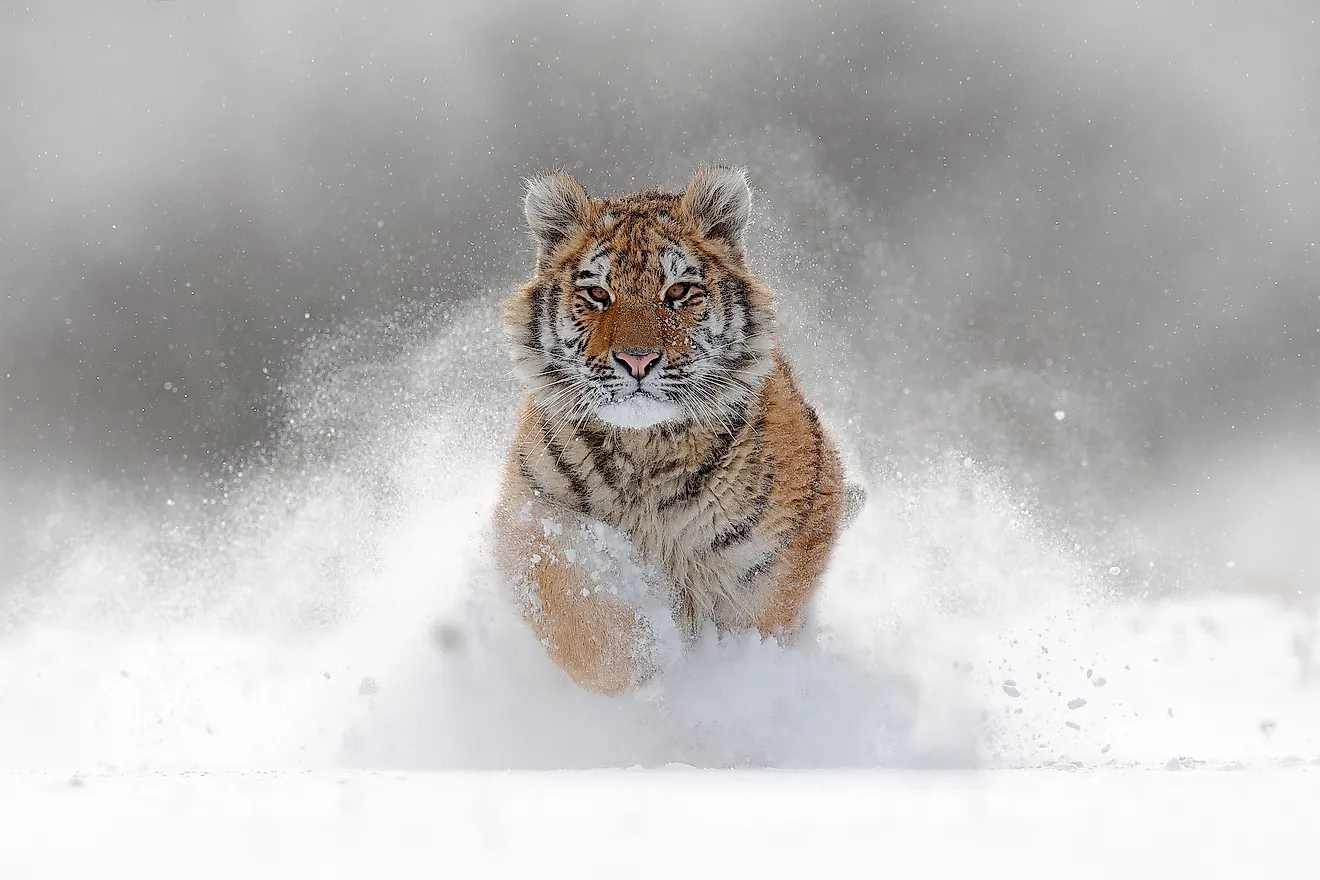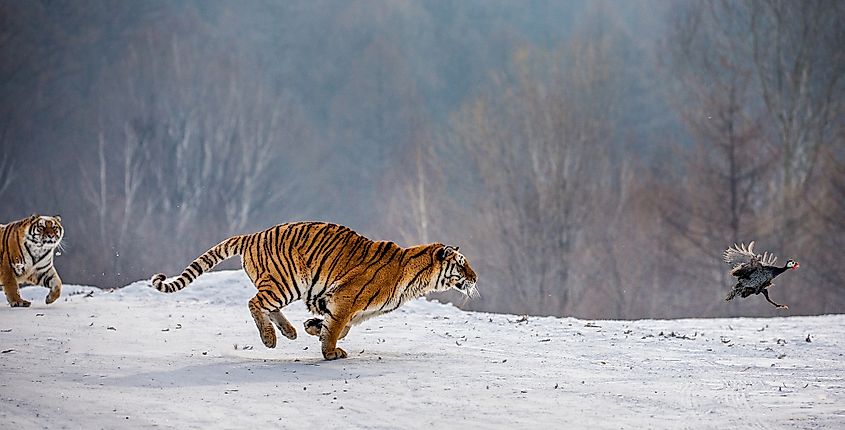8 Absolutely Astounding Facts About The Siberian Tiger

The Siberian tiger is a subspecies of tiger commonly found in Russia’s Far East region and Northern China. It is known by several names depending on the region where it is observed. Some of these names include Manchurian tiger, Amur tiger, Ussurian tiger, and Korean tiger. The Siberian tiger is listed as Threatened in the IUCN Red List because of the dwindling numbers. Its hunting is fully prohibited and punishable. From its physical appearance to behavior and hunting technique, this subspecies of tiger in unique in every way. Here are some of the fascinating facts about the Siberian tiger.
The largest cat in the world
The Siberian tiger is the largest subspecies of tiger and the world’s largest cat. An adult tiger averages 70-82 inches in head and body length, with the male being larger than the female tiger. The male averages 77 inches while the female averages 72 inches. Its long and flexible tail measures 39 inches in male and 36 inches in the female. Historically, a wild male Siberian tiger weighed 475 pounds while the female weighed 303 pounds. However, the contemporary tigers weigh an average of 389 pounds but can weigh up to 600 pounds. One specimen raised in captivity weighed an impressive 1025 pounds. The second-largest cat is the lion, followed by the jaguar, cougar, and leopard respectively.
Mainly found in Russia
About 95% of the Siberian tigers in the world are found in eastern Russia. A small population inhabits Northern China but the number depends on the movement of tigers crossing China’s border with Russia. Although the tigers ascribe to two small areas in Russia, their range is greater than other subspecies of tigers. The animals can travel considerably (up to 1,000 km from south to north in eastern Russia) in search of food. The Amur tigers are mainly found in Sikhote-Alin Mountains and Primorye and a small number inhabit the mountain system of East Manchuria.

The only tiger that can survive in the snow
The Amur tiger is the only subspecies of tiger that can survive in extremely cold areas. It is has developed certain physical characteristics that enable it to endure the cold climate of its habitat. The tiger has a thick layer of fat that insulates the body against heat loss. Additionally, the thick, dense fur that covers its body keeps the animal warm, especially when it is extremely cold. The Siberia tiger is always on the move and does not idle for long. The constant movement ensures that the body generates a lot of heat to keep it warm.
No two tigers have the same striped pattern
The Siberian tigers can be distinguished by their striped fur. Just like humans with unique fingerprints, no two Amur tigers have the same striped fur pattern. The striped pattern is unique for every tiger. Although the ground color of the pelage is generally pale, it varies in length, form, and sometimes in color from one individual to the other. In general, the fur is moderately thick, sparse, and coarse compared to other felids living in Russia. The summer coat is brighter than the winter coat.

Solitary and territorial animal
Unlike lions that form a pride of up to 12 females or 3 males, Siberian tigers are generally solitary and territorial animals. They usually mark rocks and trees to establish their territories. Rarely do they walk or hunt in groups except when a female tiger is taking care of her cubs. However, even the cubs are trained to hunt as early as eight weeks by their mother and soon become independent. A male’s territory can take up to 100 square kilometers and that of a female is around 20 square kilometers. The male tiger can allow 2-4 female tigers into its territory and even share a meal with them.
Eats up to 27 kg when hungry
Although the Siberian tiger eats an average of 8-10 kg of meat in one sitting, it can consume up to 27 kg when hungry. The Amur tigers are not always successful on its hunt mission. It can take 20-30 minutes stalking its prey until it is closer enough to pounce on it. It uses its striped fur to camouflage and hides from its targeted prey. When successful, the tiger drags the captured prey to a secluded place before feasting on it. Siberian tigers mainly feed on hoofed animals such as bears, deer, boars, and elk. They also feed on smaller species such as fish, rabbits, hares, and pikas.
The gestation period is about 105 days
The Siberian tiger has a short gestation period of about 105 days or 3-3.5 months but the female tiger gives birth only once every two years. Although the female can have a litter of up to 7 cubs, only two cubs usually survive. Siberian tigers can mate at any time of the year and subsequently give birth at any time of the year. When the female tiger is ready for mating, it signals her receptiveness by leaving scratch marks and urine deposits on trees and spends 5-6 days with the male. It is only during mating that a tiger can be heard roaring.
The subspecies almost became extinct
The Siberian tiger has faced several threats that almost caused their extinction. In Korea, the species was completely wiped out during the period of Korea under the Japanese. During the same period, the population of the tigers was only 20-30. Following the dissolution of the Soviet Union, there was widespread deforestation and illegal poaching of the Siberian tiger in Russia. In the 1990s, the tiger was listed as Critically Endangered. However, it is now classified as Endangered. According to the latest census, there are 562 Siberian tigers in the wild. Efforts have been made to curb poaching and deforestation. The importation and selling of tiger parts have also been outlawed in several countries including the US.
Other facts you must know
The Siberian tiger’s night vision is six times stronger than humans, meaning that it can go about its activities at night with little difficulties. The tiger is also an excellent swimmer and rarely move away from water sources. Its ability to swim makes it prey on fish. The Siberian tiger can attain a speed of 60 km/h and can jump up to a height of 5 meters and a length of 10 meters.











